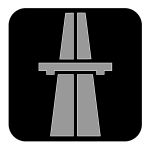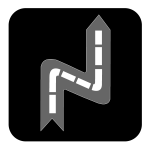Application specific tread patterns
The world of tread patterns can be a daunting one when you consider they can be specific to intended use; axle position; distance to be travelled; weather use and whether or not you would like a directional pattern.
And all of this before you get into the real nitty gritty and start to look at pattern specifics like block size for dry grip, sipe design for wet and ice handling, noise reduction and so on.
This guide is designed to give a simple overview and help you to make a decision on what type of tyres you require in general. More specific information would be gathered during an in-depth and on-going fleet tyre management programme.
So let’s start with application. What type of vehicle am I equipping with new tyres and what type of work does it do?

Long Haul – Tyres on these vehicles experience low application stress as they travel long distances without stopping and starting or twisting and turning. Motorways are generally the best surfaces to drive on so these tyres experience little surface aggression. In normal use these are low abrasion, long tread life tyres.
Example: Depot to depot goods haulage truck.

Regional – Medium abrasion on tyres with increased lateral scrub caused by using some secondary routes with tighter turns. Application stress and surface aggression are slightly increased.
Example: Fuel tanker.

Urban – City traffic causes a high abrasion, stop-start environment with constant twisting and turning. Much higher application stress is a result. Tyres may have re-enforced sidewalls to counter the effects of kerbing.
Examples: Coaches, buses, local delivery trucks.

On/Off Road – These are often referred to as construction tyres. They experience high abrasion, and are exposed to aggressive surfaces. Chipping, cutting and puncture resistance properties are important. Self-cleaning treads disperse with stones trapped in between blocks.
Examples: Refuse collection trucks and construction tippers.
Off Road – Like those of construction tyres but experiencing severe abrasion during heavy work conditions. Blocks are usually spaced far apart for mud dispersal.
Examples: Military trucks and quarry vehicles.
Now what about position?
Steer – Used only on the front axle or steer position of the vehicle. Ribbed patterns disperse water from the tyre.
All Position – An alternative steer pattern with some traction qualities which can be placed on any axle. Often used by fleet managers who want simplicity in their tyre management program. One comes off, one goes on, no matter the position.
Drive – Block pattern treads, designed exclusively for traction and placed on drive axles.
Trailer – These have a ribbed pattern design and must withstand strong lateral and braking forces and varying loads. Often with reinforced sidewalls.
Many tyres are designed to span across more than one specification and, as we’ve seen, even axle position, but you can use this guide to narrow down your ideal criteria when looking at each tyre’s design and specifications.
Would you like to know more?
Please feel free to get in touch or to read about our tyre management programmes